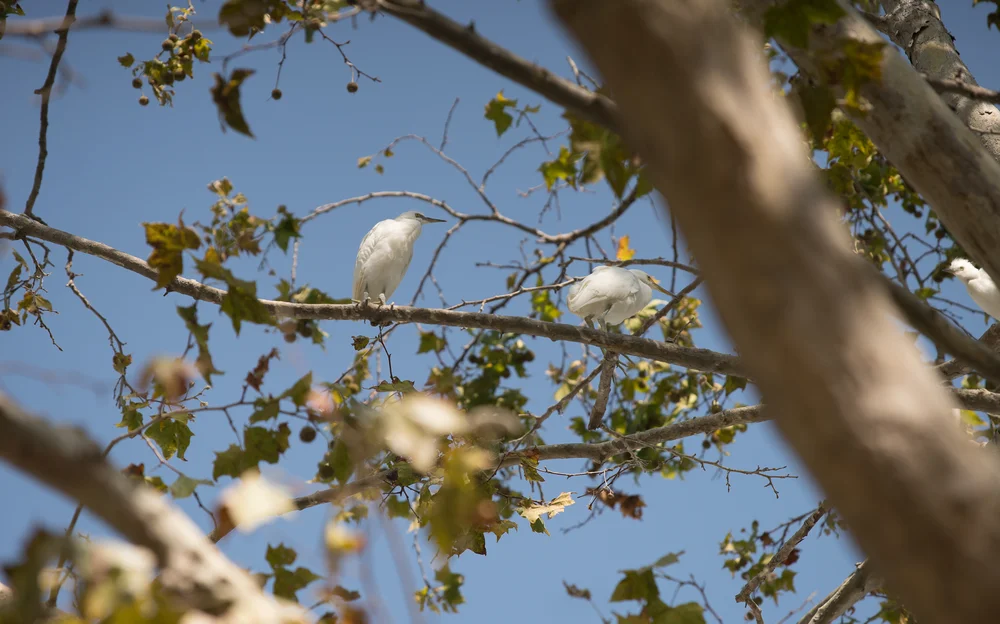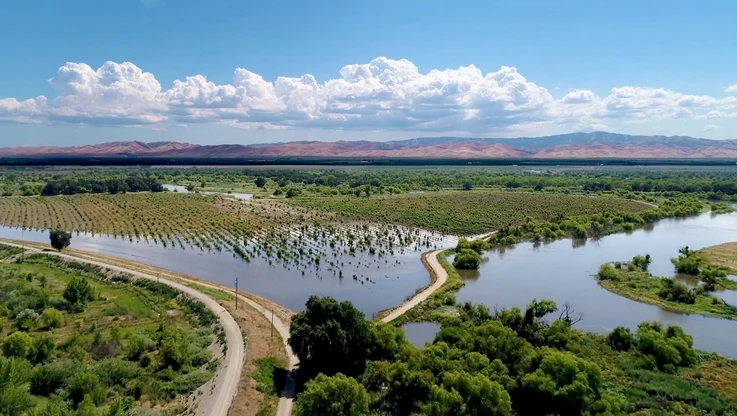Every summer, Google’s campus is for the birds
Around 2014, Google was beginning to expand east from its main headquarters at 1600 Amphitheatre Parkway into a set of existing office buildings along Stevens Creek. As our real estate and workplace services (“REWS”) team laid out plans to occupy the buildings, they noticed something. In the trees above a short section of Shorebird Way, they could hear the croaking calls and see the flapping wings of large white birds. There was an egret rookery—or nesting area—right in the middle of Google’s expanding campus.
Nesting season, which runs from February to September with chicks hatching in May, is a fraught time for birds. Disturbances associated with traffic and noise (like lawn mowers) can disrupt breeding and nesting activities. Meanwhile, the presence of a nest can be problematic for humans in the area—walk underneath the trees and you might find yourself “whitewashed.”
The REWS team wanted to find a way to accommodate the egrets and ensure that our presence in the area wasn’t disruptive to the rookery. So in partnership with the Santa Clara Valley Audubon Society (SCVAS), they set out to see what they could do to mitigate issues caused by our human presence, and create an environment that was more optimal for the birds. Now every summer, the area around the appropriately named Shorebird Way becomes egret territory.

The work starts in spring. Before nesting begins, we stop mowing the lawn underneath the sycamore trees. Signs are posted alerting nearby Googlers and other visitors to the area of upcoming road closures. In addition to suspending shuttle and car traffic from May to September, we ensure food trucks aren’t in the area, as they can attract predators that might go after fledglings. And we have notices and processes in place to ensure that if a chick falls, they can be properly transferred to a rescue organization. Meanwhile, for us humans, we’ve even ensured that there’s no sidewalk on the side of the street where the birds are nesting to prevent accidental whitewashing.
Even without the signs, the rookery would be hard to miss: Egrets are noisy, and the whitewash is no joke. But on a summer afternoon when the roads are closed, the area can feel like a little bird refuge in the middle of campus. Volunteers from the Audubon Society host “office hours” to teach interested colleagues about the egrets, and groups of seniors and students can occasionally be found on site. The rookery has even earned a spot on Google Maps.
And the egrets seem to be benefiting from the special treatment. Where once there were two species—great egrets and snowy egrets—beginning in 2015, black-crowned night herons joined the fray. And at the height of the season, more than 100 nests can be found. The birds are starting to move beyond the building, and there’s hope on the part of volunteers that the birds might eventually move closer to the Charleston Retention Basin, where there’s less opportunity for birds or humans to get in each other’s way. These are all reassuring signs for a regionally important rookery—this one hosts 20 percent of the great egret nests that are monitored in the South Bay, according to the San Francisco Bay Bird Observatory.

Shani Kleinhaus, an environmental advocate at the SCVAS and a consultant to Google on the project, says that the rookery is a great example of how you can integrate nature into a functioning campus environment. “Nature can be messy,” she admits. “But if you can create a situation where that messiness is somewhat contained, and educate people so they’re more tolerant of the impact,” you can help the environment while still enabling development.
For Googlers, the project is a point of pride—a campus landmark that exists largely thanks to volunteers and collaboration across multiple Google teams, from landscaping to security. It also speaks to our commitment to making a positive impact on the communities we call home by building partnerships with local organizations. In addition to the SCVAS, the San Francisco Bay Bird Observatory, the Wildlife Center of Silicon Valley, and the City of Mountain View have all played a vital role in the project.
The rookery also reflects a broader effort on the part of Google to design and build our offices with local environments, ecology, and animal habitats in mind. In the nearby Charleston Retention Basin, we worked with local organizations to expand a willow grove with the aim of encouraging other birds to nest in the area. The landscaping around our office buildings uses native, low-water plants and we use recycled water when possible for irrigation. These efforts aren’t limited to our headquarters: For example, when an alligator moved into our a cooling pond at our South Carolina data center, rather than relocate her, we watched “Allie” grow from four to 10 feet. She still inhabits the pond, now with a brood of baby gators.
Right now, the season’s last egret chicks are learning to fly. The cacophony of the rookery is more muted, and the road is reopening for traffic this week. But every summer, the nests at Google are a reminder of the connection that persists between the online world and the offline one. We only need to look up, and listen, to notice.
You can learn more about Google’s egret project on the Santa Clara Valley Audubon Society’s website.








